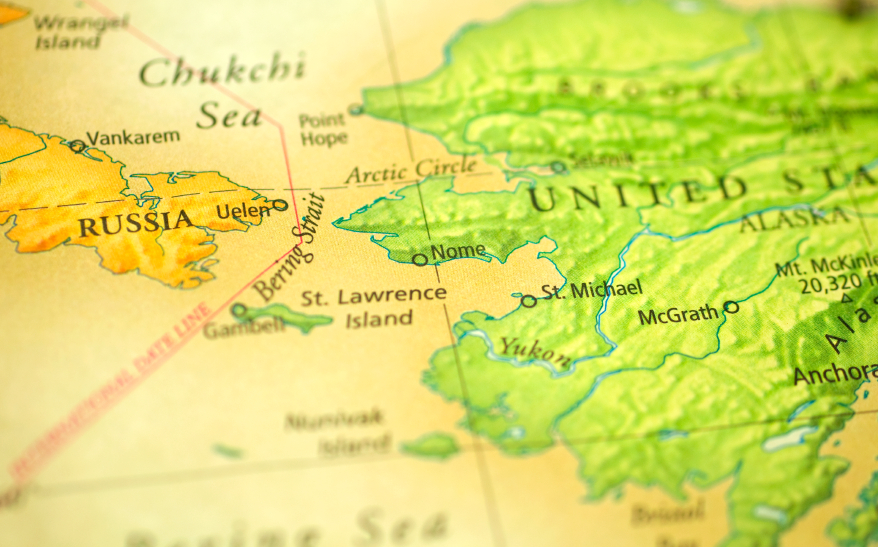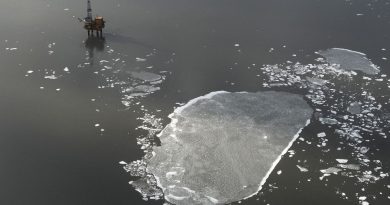U.S. agency explains report on Arctic oil spills

Inside a thick government report on the impact of off-shore oil leasing in the Chukchi Sea is a phrase that grabs the attention. It says there’s “75% chance of one or more large spills.”
The figure shows up often in the arguments of those trying to stop Shell from resuming its Arctic exploration program this summer in the Chukchi Sea, in part of what’s known as Lease Sale 193. On Monday, the Bureau of Ocean Energy Management put out a fact sheet to clarify what it means by that 75 percent figure.
Jim Kendall, Regional director of the Bureau of Ocean Energy Management, says the spill risk was calculated assuming full-on development of Lease Sale 193 over a long period.
“That is a possibility, a 75 percent chance, of one or more spills of a hypothetical, you know, development over 77 years, eight production platform, 500 wells, 4.3 billion barrels of oil produced,” he said.
BOEM says the 75 percent chance relates to a spill of 1,000 barrels or more. By comparison, the Exxon Valdez oozed more than 250,000 barrels. The Deepwater Horizon spill was several million.
‘Limited view of risk’
Michael LeVine, a Juneau-based attorney for the environmental group Oceana, says it’s good the agency explained itself, but he thinks the regulators are offering a limited view of the risk.
“The government continues to pretend that a catastrophic accident from exploration activities, like the one that Shell is seeking to undertake in the Chukchi Sea this summer, is so unlikely as not to warrant calculation,” he said.
LeVine says that’s short-sighted.
“We know that those spills can and have happened during exploration activities. The Deepwater Horizon was drilling an exploration well,” he said.
The BOEM chief says of 15,000 off-shore exploratory wells drilled in the U.S., the Deepwater Horizon was the only catastrophic spill. No other exploratory well had an uncontrolled spill of even 1,000 barrels.
Shell is proposing to drill six exploratory wells in the Chukchi over three years, in 140 feet of water. BOEM says it will release its study of the oil spill risks associated with that plan soon.
Related stories from around the North:
Canada: Canada ponders exceptions to relief well rule for Arctic oil drilling, Alaska Dispatch
Finland: Finns still sharply divided over wind power, Yle News
Greenland: Arctic oil and gas must stay in ground to restrict warming to 2°C says study, Blog by Mia Bennett
Iceland: From Arctic Circle 2013-2014, a big drop in the price of oil, Blog by Mia Bennett
Norway: Oil, Industry and Arctic Sustainability, Deutsche Welle’s Ice-Blogger
Russia: Russian drillship returns to Arctic, Barents Observer
Sweden: Lower electricity bills for Swedes, Radio Sweden
United States: With new purchase, Shell may be less keen on Arctic, Alaska Dispatch News



